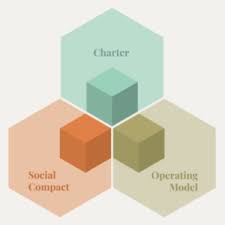Pakistan has a strong tradition of giving that dates back to the inception of the country in 1947. The Partition of the Subcontinent resulted in the largest mass migration in human history. As a result, individuals and organisations came together to support the rehabilitation of the migrants. Since then, there have been many occasions for Pakistanis to rise above challenges of varying degrees, presenting unique opportunities for people to demonstrate compassion and generosity. Over the past 74 years, Pakistanis have faced tragedies resulting from wars, floods, and earthquakes but we have always come through because of our resilience as a nation.
Philanthropy, without doubt, is ingrained in the fabric of our society, which predominantly comprises of a Muslim community. Islam promotes charity not only in the form of Zakat during Ramzan but also as Sadqat throughout the year. According to a survey conducted by the Pakistan Centre for Philanthropy (PCP), published in 2017, the total philanthropic giving of households in Pakistan was estimated at Rs 240 billion, indicating that we contribute over 1 percent of our GDP as charity. Despite being a developing country that falls in the category of low and middle-income countries, Pakistanis have a charity-to-GDP ratio comparable to countries from the developed world such as the UK and Canada.
However, the survey also revealed that most donations in Pakistan go to individuals rather than charitable organisations. This finding is concerning because we can achieve more if individual giving is institutionalized. With structured giving, we can convert our nation’s powerful tendency of philanthropy into a more impactful phenomenon. There are many charitable institutions in our country that are excellent examples of achieving such a phenomenon and making huge, meaningful impacts in Pakistan.
Shaukat Khanum Memorial Trust (SKMT) is one such institution which has an enormous operating budget each year, and nearly half of it is met with donations. SKMT runs two tertiary care cancer hospitals that provide free treatment to over 75 percent of all patients. The example of SKMT demonstrates that strengthening institutionalized giving can bring hope and life to thousands of patients who rely on such organisations for survival.
By promoting institutionalized giving, we can channelize the support of the public to achieve incredible feats and we have seen this possible in our country where institutions are run with the support of the public to deliver hope. There is a dire need to strengthen the trend of institutionalized giving to maximize the impact of philanthropy in the fields of education, healthcare, poverty eradication and many other noble causes in our country. Pakistanis should proudly support credible charitable institutions and promote welfare of their fellow citizens.
The PCP’s report identified four main factors that drive the individual tendency of giving and charitable organisations can work on developing these aspects to encourage people to participate in structured giving. First, spontaneous giving is driven by compassion in the moment. Second, religious entities have an infrastructure in place to collect small donations, such as door-to-door campaigns and donation boxes. Third, lack of trust due to distance and fear of misuse of funds. Fourth, more wealth increases the tendency to give to both individuals and organisations. These claims are supported by trends indicating that organisations that have developed trust with the public because of transparency and accountability, have means to collect small donations, use human stories to inspire compassion in the moment, and are connected with high-net-worth individuals, have enjoyed widespread support amongst the public.
There are many credible charitable organisations working in the areas of healthcare, education, et cetera in our country that show accountability to the public by publishing their audited financial reports on their websites. There are hospitals where a simple visit to the facility is sufficient to establish that the donations are being spent judiciously. Simply by looking at patients in the outpatient area, one can tell by their dilapidated conditions that they can barely cover travel costs, let alone expensive treatments. Charitable hospitals like Shaukat Khanum have gone an extra mile in gaining trust of donors by exhibiting an exceptional commitment to patient safety and services endorsed by international accreditation, and delivered on the basis of equality. The services are of the same standard for all patients and dispensed in the same manner whether a patient is self-paying or receiving financial support.
By promoting institutionalized giving, we can channelize the support of the public to achieve incredible feats and we have seen this possible in our country where institutions are run with the support of the public to deliver hope. There is a dire need to strengthen the trend of institutionalized giving to maximize the impact of philanthropy in the fields of education, healthcare, poverty eradication and many other noble causes in our country. Pakistanis should proudly support credible charitable institutions and promote welfare of their fellow citizens.























